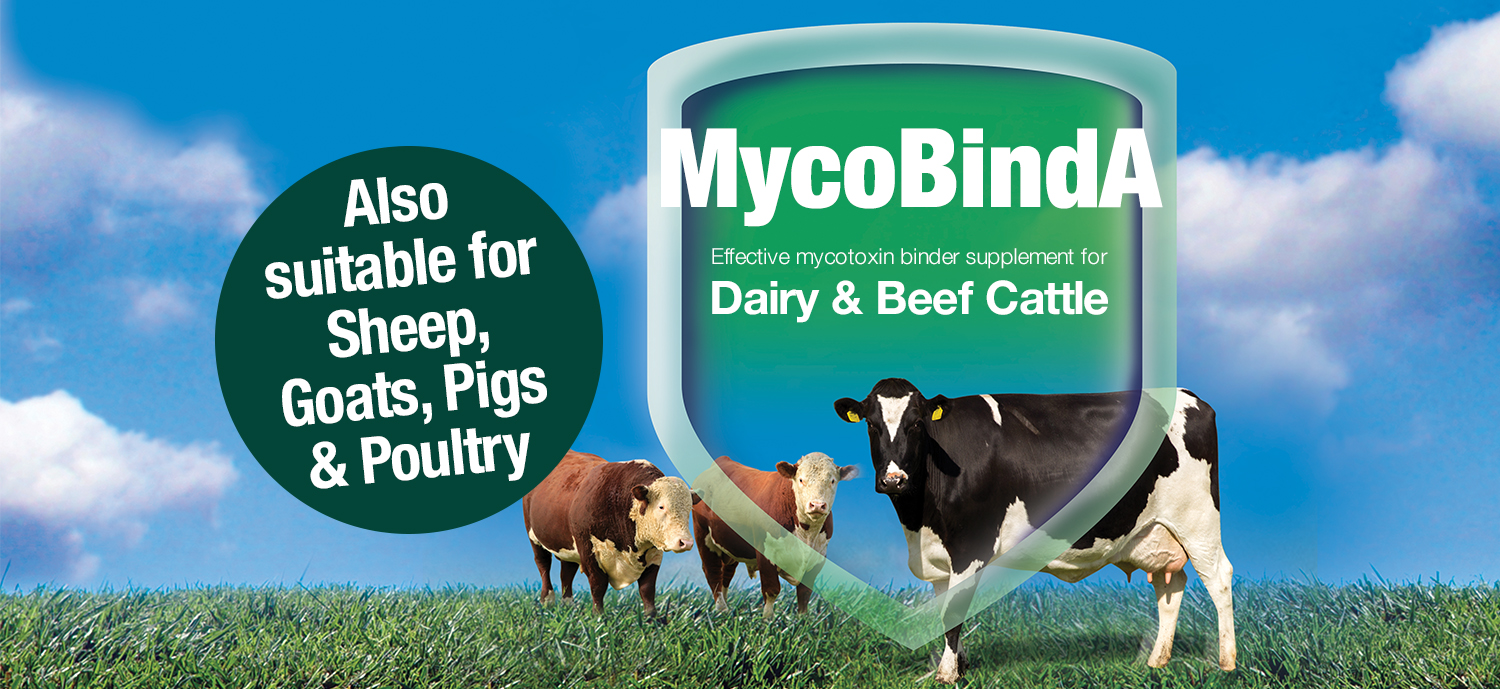

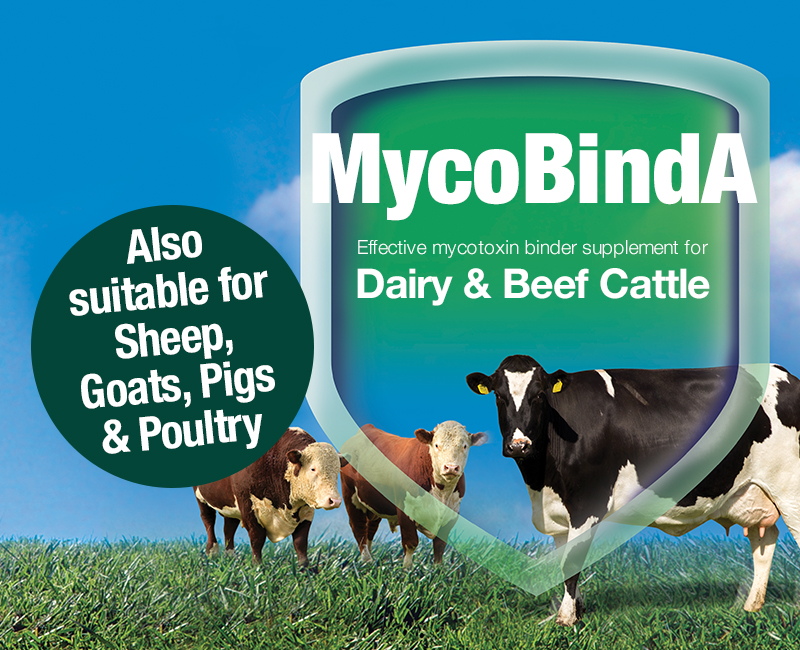
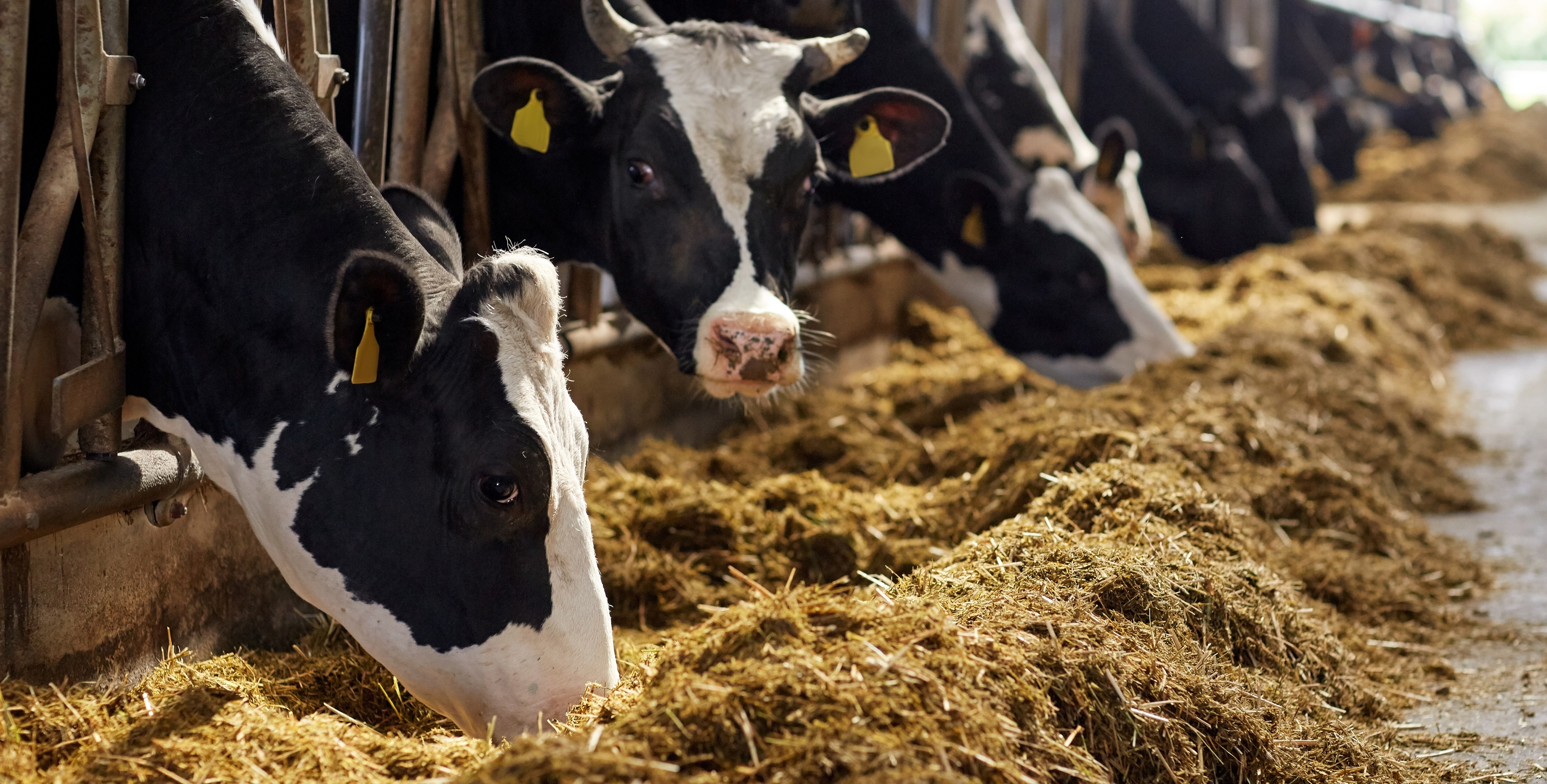
| No drop in milk yield |
|---|
| Improved milk fats |
| Better feed conversion rates |
| Better feeling and looking cattle |
| Better, firmer dung |
| Cost effective solutions |
| Better returns and maximum gains |
MycoBindA is more than just a mycotoxin binder, it is a synergistic blend of key nutrients designed to deliver a high specification and cost effective solution, in a form that is versatile and easy to use. MycoBindA can be added to the TRM, and is suitable for use in feeder wagons or for top dressing.
MycoBindA provides effective levels of bentonite, a registered mycotoxin binder recognised to reduce the effects of feed contamination by mycotoxins, by supporting feed intake, milk yield and general health. In MycoBindA, bentonite works in synergy with a nutritional yeast, bioavailable source of calcium and herbal support to optimise efficacy.
MycoBindA provides fenugreek, not only as a palatable herbal addition to encourage feed intake, but also for it’s recognised roles in milk composition and supporting milk yield.
By nutritionally addressing the risks associated with mycotoxin contamination, and encouraging optimum feed intake in a unique synergstic blend, MycoBindA removes the key barriers to feed conversion efficiency, ensuring you – and your herd – get the most out of the diet fed.
With one bag of MycoBindA providing an effective feeding rate for 100 cows, at just 50g per day, this is a cost effective way to support your stock and maximise gains.
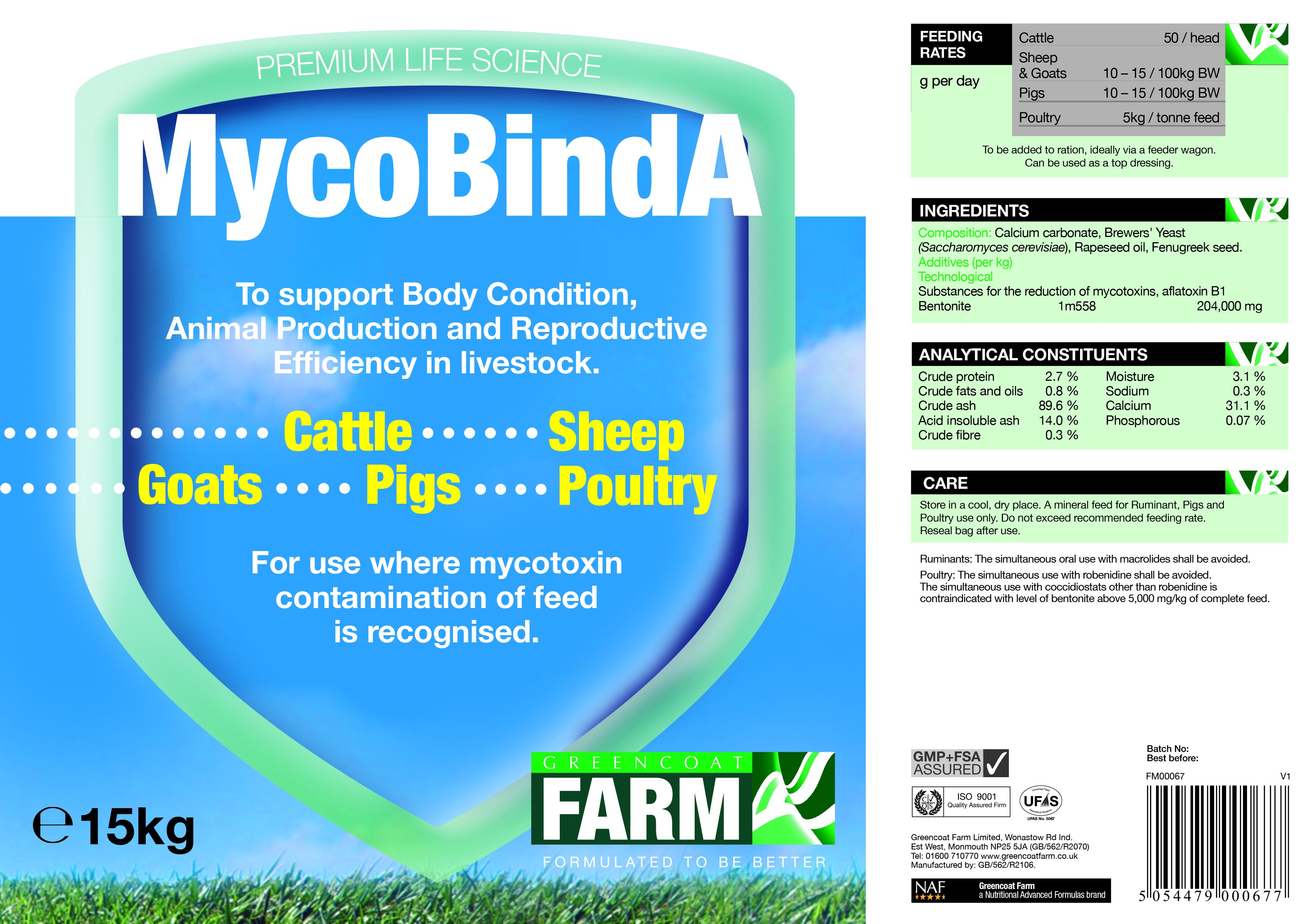
Real Results on Farm:
Whether you are considering mycotoxin binders for the first time, or looking for an efficient product which can offer you increased farm profit compared to your current product, then look no further than MycoBindA.
Don’t believe us? Hear what our customers have to say about MycoBindA:
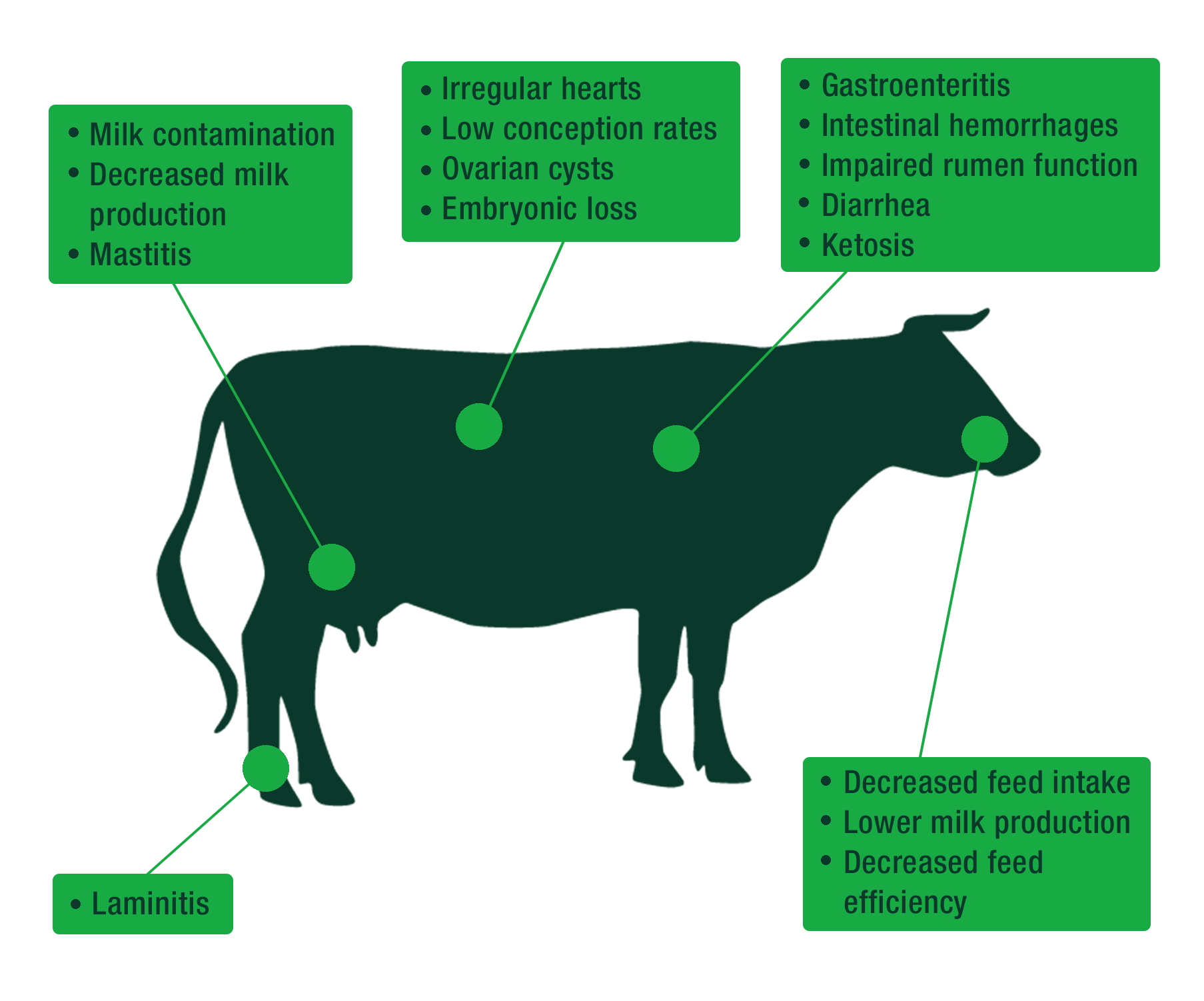
Real Results on Farm:
Whether you are considering mycotoxin binders for the first time, or looking for an efficient product which can offer you increased farm profit compared to your current product, then look no further than MycoBindA.
Don’t believe us? Hear what our customers have to say about MycoBindA:

Real Results on Farm:
Whether you are considering mycotoxin binders for the first time, or looking for an efficient product which can offer you increased farm profit compared to your current product, then look no further than MycoBindA.
Don’t believe us? Hear what our customers have to say about MycoBindA:

“Mycotoxin issues are becoming more common. I had a few cows become poorly due to mycotoxins last year and was advised to include a mycotoxin binder in the ration to help overcome the issue. I initially used a product that was recommended by one of my feed suppliers which seemed to do the trick but was then approached by Greencoat Farm, a local supplement manufacturer from Monmouth, asking if I would agree to carry out an on farm trial on their new product MycoBindA. I swapped to the Greencoat product and still continue to feed it – it works just as well as the product that I had been using previously and works out quite a bit cheaper. I would recommend this product.”
Mr Andrew Alford, Abergavenny
“Mycotoxin issues are becoming more common. I had a few cows become poorly due to mycotoxins last year and was advised to include a mycotoxin binder in the ration to help overcome the issue. I initially used a product that was recommended by one of my feed suppliers which seemed to do the trick but was then approached by Greencoat Farm, a local supplement manufacturer from Monmouth, asking if I would agree to carry out an on farm trial on their new product MycoBindA. I swapped to the Greencoat product and still continue to feed it – it works just as well as the product that I had been using previously and works out quite a bit cheaper. I would recommend this product.”
Mr Andrew Alford, Abergavenny